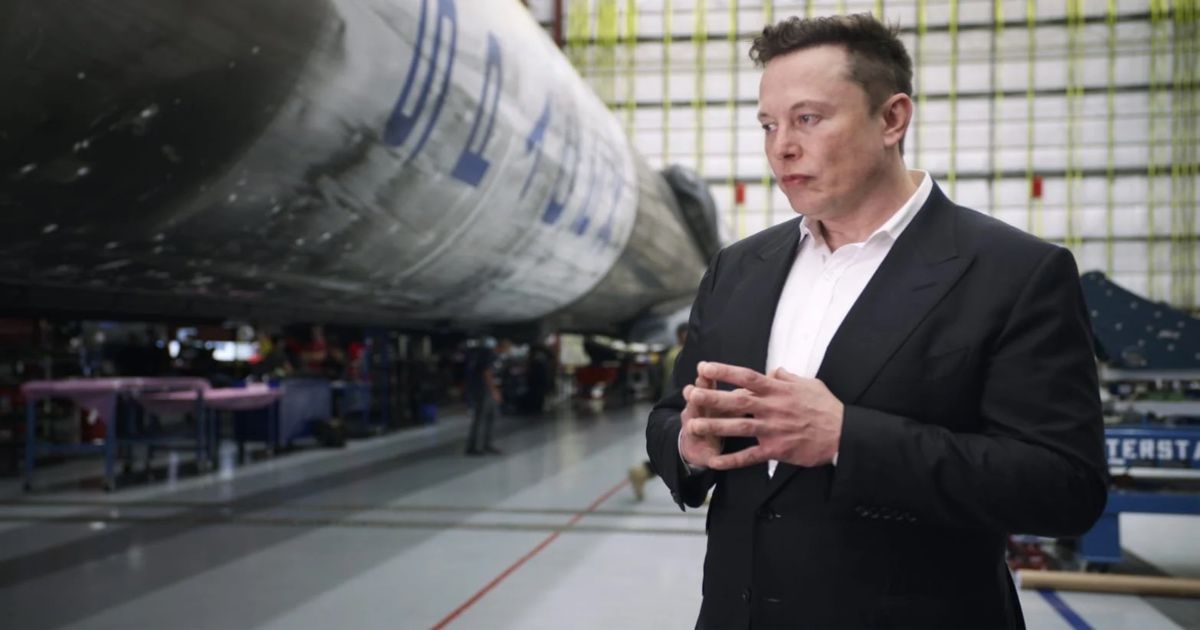
In late 2021, the spaceflight company founded by billionaire Elon Musk, SpaceX, made history when it launched the first all-civilian spaceflight. On that flight, the four individuals paid for the opportunity to be able to go into space, which does not have a light price tag. It has been reported that private individuals have been paying up to $500,000 for a single trip to go into space—which, thankfully, is a round-trip one—while NASA pays up to $58 million to even have an orbital trip. Other notable billionaires looking to tap into the business include Amazon founder Jeff Bezos, who also recently went into space as a civilian. While movies like Moonshot may be on the mark as portraying space travel as an exclusive club for the wealthy, it seems that a race by technology companies and their founders to get into space has only just begun.
MOVIEWEB VIDEO OF THE DAY
Return to Space, a documentary released by Netflix about the collaboration between NASA and SpaceX, was created by two award-winning filmmakers: Elizabeth Chai Vasarhelyi and Jimmy Chin. The two are a husband and wife team, and together they have worked on other documentaries like Meru and Free Solo, which both covered the topic of rock climbing. Another documentary, The Rescue, covers the cave divers who rescued a group of Thai teenagers trapped inside a cave. Free Solo particularly won quite a bit of acclaim on the awards circuit, as it went on to receive the Academy Award for Best Documentary Feature in 2019. In Return to Space, they took their cameras and aimed higher, for something bigger in the universe: perhaps an elaborate metaphor for Musk’s overarching goals in the grand scheme of things.
The Return of American Space Travel
Netflix
The documentary first began filming in November 2019, following advancements SpaceX has made over three years. Amid those three years lies the COVID-19 pandemic. This posed a potential threat to not only the documentary but the progress the company could have made as well in terms of their work and research. Musk was unable to attend the launch even because he had contracted COVID-19. But SpaceX’s history goes much farther than that: Musk founded the company in 2002 after a year of dwelling on the possibilities of growing plants on Mars. Relatively unknown as a company for years, it only recently has come to mainstream media attention for its growth opportunities in commercial space flight. 2022 marks the twentieth year of SpaceX’s official existence, but also the tenacity of a company that was competing against the heavyweights of the aviation and boating industries, like Boeing.
The advent of SpaceX and NASA’s collaboration, as the documentary states, marks the return of American astronauts after years of inactivity. SpaceX is presented as a savior of NASA, even though it is a commercial agency and not a government one. Perhaps this unfolds like an advertisement for the company and Musk’s endeavors at times, but there is one undeniable aspect of the documentary: it glosses over the company’s failures. Return to Space is about the era of SpaceX that is to come and its glory, not about the process it took to get here. It also does not acknowledge the commercial side of SpaceX and instead chooses to focus on its government contract.
Related: Chris Evans is ‘Very Excited’ to Join Scarlett Johansson in Space Race Drama Project Artemis
Humanizing the Genius
Netflix
Voiceovers with Musk directly articulate his vision and dream from the man himself, showing that he has a real voice outside outlandish posts going viral on Twitter. It is difficult to untangle the story of SpaceX with Musk’s own story, especially as the documentary works to humanize him. Regardless of what one thinks about Musk, SpaceX is something he managed to build from the ground up in the early 2000s. “I’m not good of a dancer,” he laughs at one point, then excuses himself from a crowd of reporters. These small glimpses offer insight into Musk as a human being, not a billionaire or someone with an excessive amount of social media followers. However, there are not enough of these moments in the documentary for someone to truly feel like they know Musk. It adds to the collective mythos that Musk has created and feels almost contrived at moments.
Other elements working within the documentary include family footage of NASA employees, camera footage, and one-on-one interviews with NASA and SpaceX officials and engineers. Another key interview brought into the mix is an interview with YouTuber Everyday Astronaut, a familiar face for anyone interested in the casual side of this industry. Footage provided by NASA pieces together the recent history of space flight in the United States, including its gradual demise until now. The connection to Russia is explored and enhanced by sociopolitical situations recently going on with Russia. Rumors are abundant that Russia may even quit the International Space Station, thus adding urgency to the American government’s desire to build up its space program.
However, the creation of Return to Space did not come without major complications. Because the cast and crew needed to be able to film in government locations, with that came stringent rules about what they could and could not do. According to Vanity Fair interviews with the filmmakers, no technology that the American government uses could be featured in any shot whatsoever, and “a ruling” had been made in the middle of filming. That rule dictated that on top of the federal property two people could not be in a room at the same time—in the world of documentary filmmaking, that makes it extremely difficult to create content that is not only good but of substance. That explains the extent of the archive footage used as transition scenes between explaining the holes left behind by the overarching narrative.
The stakes are also quite low during this process. Throughout the documentary, it lacks any sort of issues plaguing the project outside bad weather, so when the actual launch comes there the distilled nature fails to create tension. Press release interviews tend not to be the most exciting content in documentaries, so if someone is looking for historical preservation of this event, this might be the documentary for them. It fits the need for documenting history, as this was the first-ever commercial class flight, but it is not everyone’s cup of tea. It is not one’s science fiction fantasy about Mars or space, nor a business or legal drama. It instead offers a look inside the nitty-gritty business side of things, even if it is not something that broadly appeals to the public.
Related: These Are the Best Sci-Fi Movies Made Before Star Wars
Billionaires in Space
Netflix
One thing Return to Space does lack, however, is an actual urge to need to do this. It ultimately becomes an event that one would expect from this kind of work: the government and wealthy private individuals working together to create a scenario that would most likely exclude everyday people. By including the stories of the astronauts, it adds an endearing touch to it at times, but it fails to go beyond the stakes of this becoming something necessary for governmental purposes. As stated before, this is Musk’s universe and story coming together, not a tale that goes above and beyond in a universal tone.
Maybe a key takeaway from Return to Space is the roots of capitalism and the American Dream. There is this need to do something grand, something greater no other human has done before, to prove a point or fulfill a long-lost dream hidden deep inside of one’s self. This is a key issue here: Musk is only able to do what he does because he has the money and resources to do all of this. If a single billionaire is positioned as the future of space travel, perhaps there will be other documentaries investigating the impact of this shortly. Travel to Mars might also be closer than we think, too, if the documentary’s subjects are to be believed for what they are developing.
And perhaps Musk is the actual future of space travel, but by a single shot where Neil Armstrong is seen, it can be deduced that the documentary has lost its footing of where all of this came from. It only looks back on moments of tragedy, such as the Challenger explosion and the end of the American space program, but fails to interrogate the reasons as to why certain things happen. The interviewers may briefly reflect upon these historic moments where lives were lost, but, at the end of the documentary, nothing is addressed as to what can happen with Musk’s technology. Or, for example, if Musk is only fulfilling his dreams and fantasies instead of making a great step for humankind. Return to Space can exclusively be streamed on Netflix starting April 7, 2022.
Community: Will Fans Ever See ‘Six Seasons and a Movie?’
Read Next
About The Author
Ashley Hajimirsadeghi
(77 Articles Published)
Writer, author, and aspiring critic. Find me @ashleynassarine.
More
From Ashley Hajimirsadeghi
You can view the original article HERE.





























